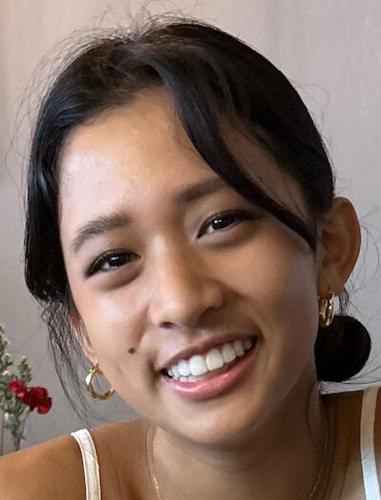One of writing’s greatest strengths is its ability to use pain to foster compassion, to use this compassion to connect us all.
Before I was a journalist, I was a creative writer. I wrote my first short story in second grade and followed that with myriad sunset-colored poems throughout middle school. But beyond imagistic poems and witty short stories, what I fell in love with was writing memoirs.
There is something about putting the most vulnerable version of yourself on white pages, sifting through the thoughts that nestle between margins, facing them and confronting them, that is deeply intimate and healing — an exploration of and interaction with the self.
When I joined my high school journalism program, I came to realize writing’s power not just to heal the self but to heal others. Our sadness connects us: We are less alone when we understand we are not the only ones in pain.
So, writing is about connecting, sending a sound out into the dark and listening for what comes back. Although it sounds simple, it was only after an interview with a previously incarcerated man that I gained this understanding.
In my sophomore year, I wrote a feature about rehabilitation through art. I interviewed Frederick Griffin, who spent 17 years in prison, about his participation in a writing program. Within cramped cells, soiled floors and windowless walls, writing allowed him to be a version of himself he once felt he couldn’t be: to wrestle with his grief and burden, to face it, confront it and heal.
When Griffin asked me if I would like to hear his work, I ecstatically agreed, curious to hear even a few sentences of what filled his mind during his time in prison. He read his piece — a letter from his body to himself wherein the voice of his body speaks about the sexual abuse it experienced early on.
Once he finished, he said this had been his first piece of writing, an attempt to address the trauma he had tried to silence for years. Writing about it allowed him to realize this trauma had to be heard, understood and accepted as part of himself for him to heal.
Recommended for you
After a few more follow-up questions, I ended the Zoom call, but his wisdom and self-understanding compelled me for days.
Like Griffin, I wield writing as a tool of self-discovery. Often, I start not knowing what exactly I’m writing about — I walk inside myself for hours, dissect a memory till it’s something tangible on the page.
While drafting the feature, I found myself seeking that understanding between the margins again. I wanted to discover how the same emotions and themes in Griffin’s story could take on a different shape within my own life. As a writer, I knew that finding shades of myself within another’s story would allow me to give it an intimacy that could reach others the same way it’d reached me.
As I repeatedly reviewed transcripts and replayed the conversation in my head, I realized how his pain connected to mine and my classmates — high school students in a prosperous suburb who nevertheless also suffer. We all have pain within us. But the need to heal serves as a point of connection for us all.
I believe in writing for this reason — in the empathy it creates. I owe much of my compassion to writing, and while I began as a writer who mostly wrote about herself, journalism was my guiding light to hearing the stories of others and putting them out there for people to relate to and find strength in.
Writing is the lifeline of our world. It instills an urgency for change within us and charges our voices with a compassion that transforms itself into so many other essential qualities — ambition, bravery, tenacity.
With this understanding, I hope to continue finding stories in every crevice and crack of the world, spotlighting them for others, and granting readers a space to find themselves within a story. As Griffin discovered, the first person we’re writing to is often the self because the self is lonely and difficult to understand. It is only after we begin to understand ourselves that we begin to understand others, share our words and send them out into the dark to show that we are not as alone as we seem.
Naomi Hsu is a senior at Carlmont High School in Belmont. Student News appears in the weekend edition. You can email Student News at news@smdailyjournal.com.






























(0) comments
Welcome to the discussion.
Log In
Keep the discussion civilized. Absolutely NO personal attacks or insults directed toward writers, nor others who make comments.
Keep it clean. Please avoid obscene, vulgar, lewd, racist or sexually-oriented language.
Don't threaten. Threats of harming another person will not be tolerated.
Be truthful. Don't knowingly lie about anyone or anything.
Be proactive. Use the 'Report' link on each comment to let us know of abusive posts.
PLEASE TURN OFF YOUR CAPS LOCK.
Anyone violating these rules will be issued a warning. After the warning, comment privileges can be revoked.